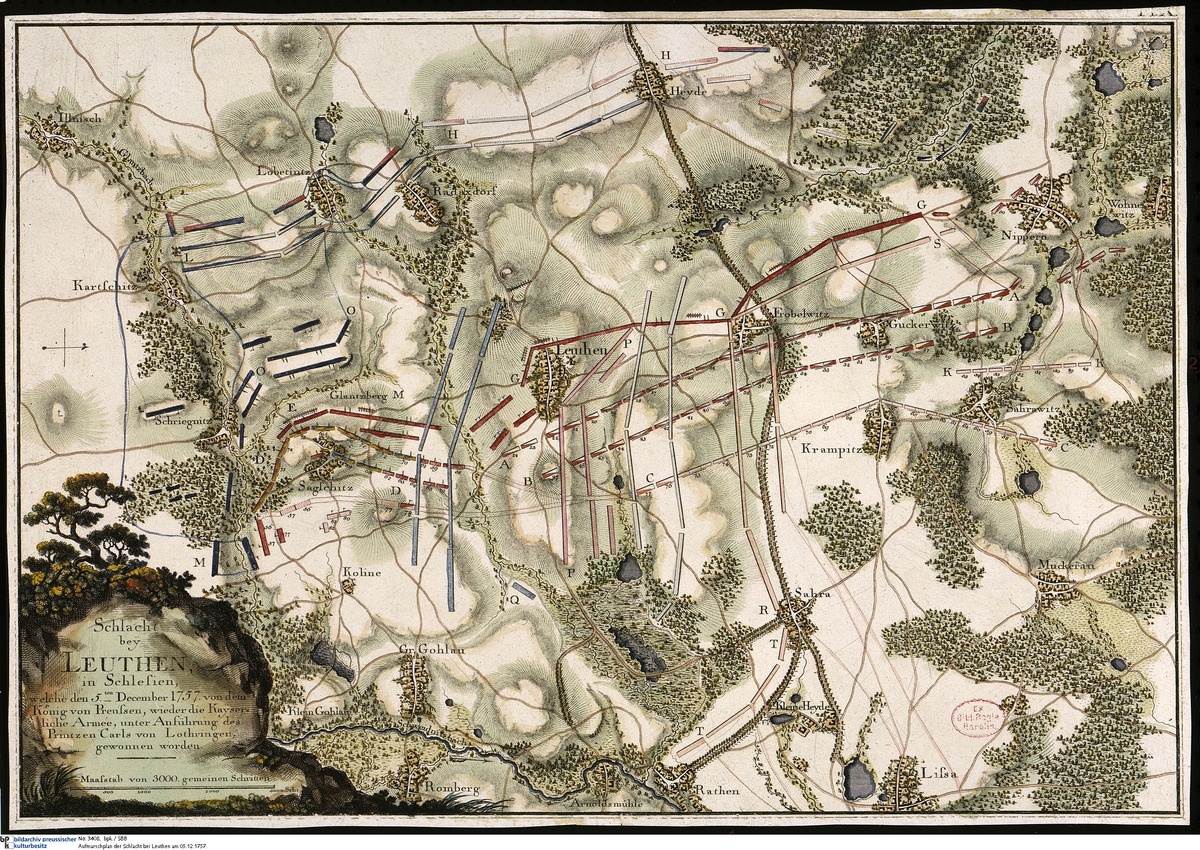Abstract
After Prussia conquered Austrian Silesia in the wars of the 1740s,
Maria Theresa and her chancellor, Wenzel Anton Kaunitz-Rietberg, forged
a new coalition against Frederick II (“the Great”). Believing an attack
was imminent, Frederick initiated the Seven Years War (1756-63), thereby
exposing Prussia to a powerful force of Austrian, Saxon, French, and
Russian troops. Britain was his only source of support. The Battle of
Leuthen (December 5, 1757), where Frederick defeated a much larger
Austrian army under the command of Charles of Lorraine, became a
legendary and vaunted example of his ability to prevail against all
odds. But the victory was narrow and costly. In the end, Prussia escaped
defeat in the Seven Years War chiefly because Czarina Elizabeth I died
(r. 1741-62) and Russia subsequently withdrew from the war. The image
below is a commemorative reproduction of the battle plan used in
Leuthen.
